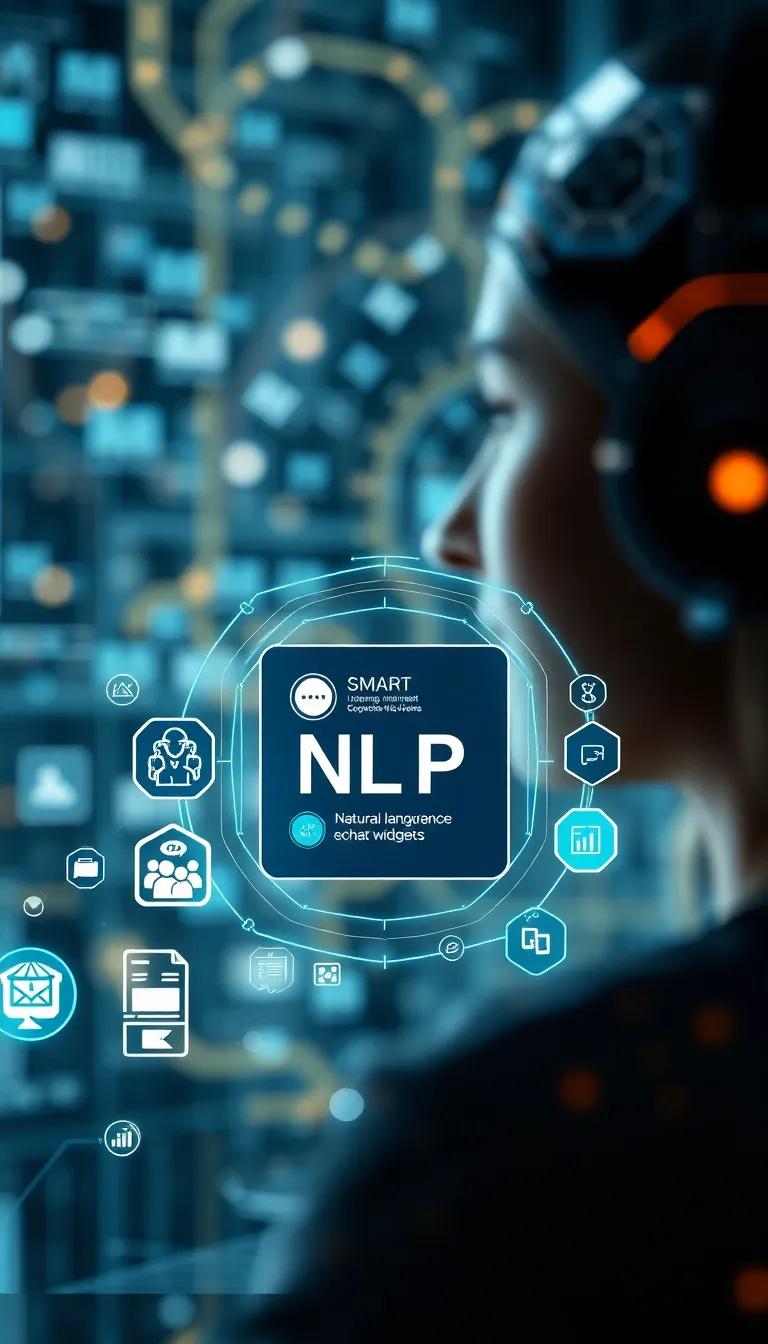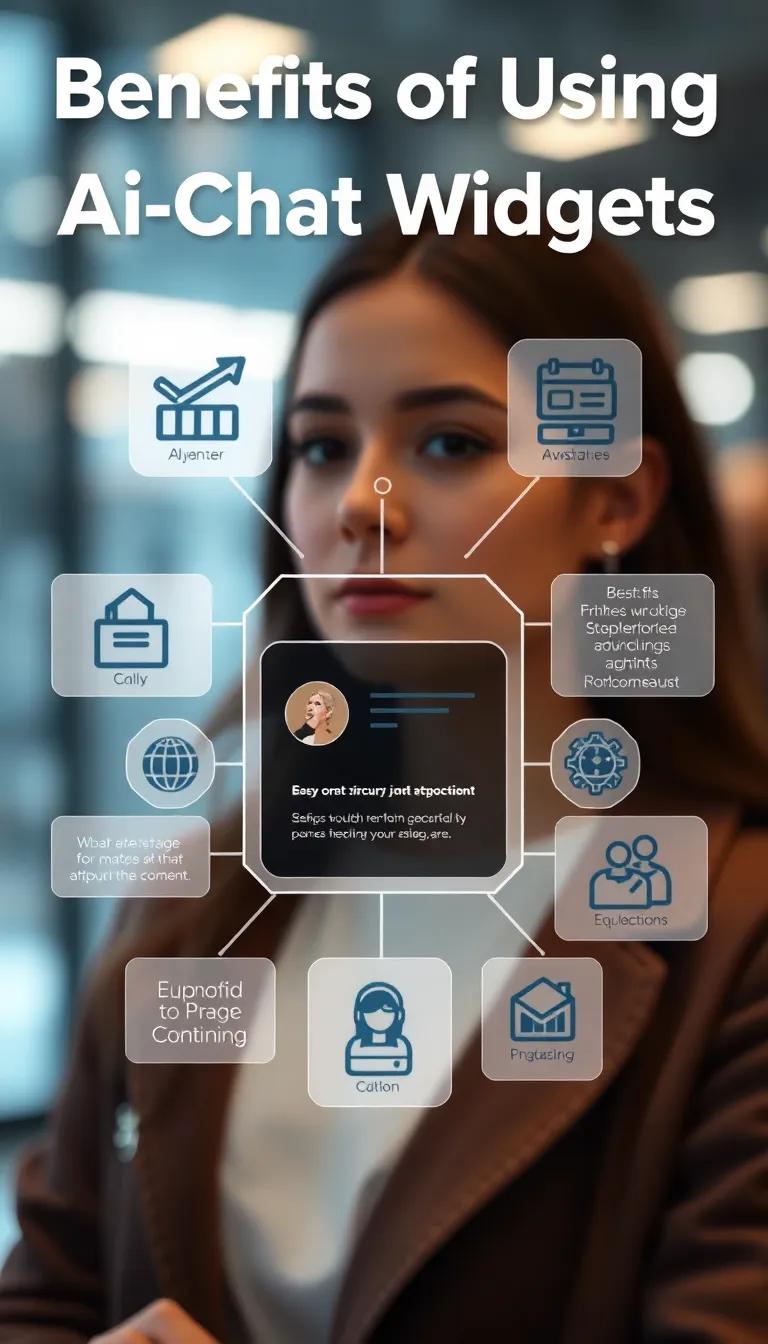Skip to content
Boost Chat Performance With AIPowered Free Website Widgets
//
Introduction
In the modern digital landscape, enhancing user interaction with chat functionalities can significantly improve engagement and customer satisfaction. As businesses increasingly adopt AI technologies, free website widgets are emerging as powerful tools to boost chat performance. These widgets, designed to integrate seamlessly into various web platforms, harness the capabilities of artificial intelligence to provide responsive, context-aware conversations that truly resonate with users. This article delves into the significance of these AI-powered tools and how they can transform the way businesses communicate with their customers.
By exploring various facets of free website widgets, from their fundamental functions to advanced AI integration, this article aims to equip readers with a comprehensive understanding of how to effectively implement these technologies. We will discuss the advantages of utilizing AI-driven chat technologies in improving customer service, streamlining communication, and fostering personal engagements. With practical insights and step-by-step guidance, you’ll learn how these tools can genuinely enhance the chat experience on any website.
Understanding Chat Performance Metrics and Evolution of AIDriven Communication
Effective chat performance encompasses several key metrics and user experiences that are vital for evaluation. At the heart of assessing chat performance are metrics such as response time, user engagement, resolution rate, and customer satisfaction scores. These metrics help businesses understand how well their chat systems are performing in real-time customer interactions. A reduction in response time generally correlates with enhanced user satisfaction, as customers increasingly expect instant gratification. Moreover, user engagement is measured by the number of interactions per session, which reflects how engaging the conversation is and whether the chatbot is successfully retaining the user’s interest.
The approach to human-computer interaction has significantly evolved over the years. Initially, chat interfaces consisted of rule-based bots that followed strict scripts, often leading to frustrating user experiences when confronted with complex queries or unexpected responses. However, advancements in artificial intelligence have transformed these simple bots into sophisticated systems capable of handling nuanced conversations. Today, AI-powered chat solutions can understand context, interpret emotions, and even emulate human-like engagement, marking a substantial shift in how users perceive chatbot interactions.
To appreciate the nuances of chat performance, it is beneficial to analyze the evolution of these technologies. Early chatbots operated within rigid parameters, limiting their capability to respond beyond pre-set conditions. With the advent of natural language processing (NLP) and machine learning, chat interfaces can now learn from interactions, continuously improving their understanding of user intent and feedback. This transformative journey from basic scripted responses to advanced conversational agents illustrates the remarkable progress in creating more effective chat interfaces.
User experience in chats is not solely about the technology but also about how well the chatbot aligns with customer needs. A chat widget that intelligently adapts to user behavior can significantly boost performance metrics. Personalized interactions lead to higher user satisfaction, fostering loyalty and encouraging.
Understanding chat performance requires a comprehensive view of both metrics and the evolution of chat technologies. The journey from basic bots to sophisticated AI does not only improve interaction quality but also contributes to a more engaging user experience, paving the way for enhanced customer relations and business success.
The Technology Behind AIPowered Chat Widgets Natural Language Processing and Machine Learning in Chat Performance
Understanding Natural Language Processing in Chat Widgets
At the heart of AI-powered chat widgets lies Natural Language Processing (NLP), a domain that blends linguistics, computer science, and artificial intelligence to enable machines to understand, interpret, and respond to human language in a meaningful way. The significance of NLP in enhancing chat performance cannot be overstated, as it enables the widgets to decipher user intent, facilitate context-aware conversations, and generate relevant responses. NLP utilizes various algorithms that analyze syntax, semantics, and sentiment, which are crucial for producing interactions that feel natural and engaging.
One prominent aspect of NLP is tokenization, which breaks down sentences into smaller units, allowing the chat widget to understand individual words and phrases better. Following this, named entity recognition (NER) identifies specific items, such as names, dates, and locations, which further refines the interaction. Sentiment analysis is another vital component, allowing the widget to gauge the emotional tone of user inputs, thus enabling more empathetic responses. This depth of understanding ensures that users feel acknowledged and catered to during their interactions.
The Role of Machine Learning in Enhancing Chat Performance
Machine Learning (ML) complements NLP by allowing chat widgets to learn from user interactions continuously. Through techniques like supervised learning, the chat widgets are trained on diverse datasets, which include thousands of conversational examples. By analyzing patterns and outcomes from previous exchanges, ML models improve their ability to predict appropriate responses over time. This iterative process allows chat widgets to adapt to the unique language styles and preferences of different users, leading to more personalized interactions.
The deployment of reinforcement learning further enhances chat performance by rewarding the widget for successful responses and penalizing it for errors. This dynamic feedback loop fosters continuous improvement, making the chat experience more intuitive and user-centric. Integrating NLP with machine learning algorithms creates a powerful synergy, enabling AI-powered chat widgets to facilitate complex, human-like conversations that elevate user engagement and satisfaction. Through these advanced technologies, businesses can transform the way they communicate with their audience, ensuring that users enjoy a seamless and responsive experience that keeps them coming back for more.
Types of AIPowered Free Website Widgets Enhancing Chat Performance with Intelligent Tools
Exploring Diverse Chat Widget Categories
AI-powered website widgets come in various forms, each tailored to specific functionalities that enhance chat performance. Understanding these types can significantly inform their effective application across different contexts. Among the myriad of options available, one can pinpoint several prominent types that stand out based on their unique characteristics and purposes.
One common type is the live chat support widget. This widget functions as a real-time communication tool, allowing users to engage directly with human agents when necessary. Ideal for customer support scenarios, it addresses inquiries promptly and efficiently while maintaining customer satisfaction. These widgets often incorporate AI technology to triage initial queries, providing immediate responses or redirecting users to the appropriate human representative for more complex issues.
Another popular category is the chatbot widget. These are fully automated tools that can offer instant replies based on a collection of predefined questions and responses. Best suited for handling repetitive inquiries, such as FAQs about products or services, chatbot widgets can operate 24/7. Their efficiency in managing high volumes of queries makes them invaluable in sectors like e-commerce and service industries, where customer engagement needs are constant.
Feedback widgets represent yet another type, designed to gather user insights through structured interactions. They facilitate effective communication of user experiences and opinions directly through chat interfaces. This type of widget is particularly beneficial in understanding customer satisfaction levels and in refining offerings based on real-time feedback.
Interactive voice response (IVR) widgets are also gaining traction, especially in environments where hands-free interaction may be preferred, such as mobile devices. These AI-driven voice widgets allow users to navigate through options via vocal commands, providing a seamless experience for inquiries, orders, or support without the need for typing.
Each of these chat widget types gains efficacy based on the context in which they are deployed. For instance, live chat support is essential in environments requiring immediate human interaction, while chatbots dominate scenarios marked by repetitive inquiries. Understanding the context helps businesses choose the right AI-powered widget, ultimately enhancing user experience and elevating overall chat performance on their websites.
Benefits of Using AI Chat Widgets
Enhancing User Experience with AI-Powered Free Website Widgets
Incorporating AI chat widgets into websites brings a myriad of benefits, ultimately transforming how businesses interact with their customers. One of the most significant advantages is the improvement in customer service. AI chat widgets provide immediate responses to inquiries, ensuring that users receive assistance around the clock. This level of availability not only reduces waiting times but also cultivates a sense of reliability and trust in the business. Enhanced customer service leads to higher satisfaction rates and encourages repeat visits, fostering brand loyalty.
Increased efficiency is another compelling benefit of utilizing AI chat widgets. Traditional customer service often relies on human agents, which can lead to bottlenecks and increased operational costs. AI chat solutions can handle multiple conversations simultaneously, allowing businesses to provide support to a larger audience without the need for excessive staffing. This automation allows human agents to focus on more complex issues, enhancing overall productivity and freeing up resources for other critical business functions.
Fostering Engagement and Interaction
AI chat widgets really boost how users get involved. They make the interaction feel personal by checking out how users behave and what they like so they can adapt the conversation. For example, if someone keeps looking at items in a certain category, the chat widget might jump in and offer related suggestions or special offers. This kind of personalized approach keeps users interested and encourages them to hang around longer on the site, which can really help increase those conversion rates.
Another notable benefit is the ability to gather valuable data through user interactions. AI chat widgets can track common queries, user satisfaction levels, and engagement trends. This information can be instrumental for businesses looking to refine their offerings or identify areas for improvement in customer experience. By understanding consumer needs and preferences more deeply, businesses can make informed decisions that enhance their products and services.
The implementation of AI chat widgets can lead to a significant reduction in operational costs. With the efficiency that these tools bring, companies can redirect their focus and investments towards innovation and growth instead of simply managing customer inquiries. Overall, leveraging AI chat widgets embodies a strategic move that benefits both businesses and their customers, paving the way for enriched interactions and optimized performance.
Challenges in Implementing AI Chat Solutions
Technical Integration Hurdles
While AI-powered chat solutions can significantly enhance user interactions, they also present specific challenges during implementation. One of the most significant hurdles businesses encounter is the technical integration of these systems with existing platforms. Many companies utilize a combination of customer relationship management (CRM) tools, e-commerce platforms, and other software solutions. Ensuring that the AI chat widget seamlessly integrates with these pre-existing systems requires extensive planning and technical expertise. Businesses may need to invest in custom development work or rely on third-party integrations, both of which can introduce delays and additional costs.
When you try to make the AI chat widget work on different devices and browsers, you often run into compatibility issues. It’s really important to make sure that everyone has a smooth and easy experience no matter what platform they’re using. If the setup isn’t done perfectly, it can result in frustrating situations for users, which can mess up how well the chat solution works.
User Acceptance Challenges
Another significant barrier to the successful deployment of AI chat widgets involves user acceptance. Many customers initially approach AI chat solutions with skepticism. Users might have had previous negative experiences with non-human customer service representatives, leading to hesitance in engaging with automated systems. To address this, businesses need to prioritize transparency and establish trust. Clear communication regarding how the chat widget operates and its benefits can help in mitigating user concerns.
The design and function of the AI chat widget really matter when it comes to how users feel about it. If the setup seems tricky or the conversations feel off, people might lose interest pretty quick. So, it’s a good idea for businesses to look into user experience research and testing. This way, they can tweak the chat interface and make it as easy to use and as natural as they can.
Training is essential for users to make the most out of AI-powered chat solutions. If a business does not provide adequate support or resources to help users understand how to interact with the widget, it can diminish the perceived value of the solution, ultimately affecting engagement levels. Continuous improvements based on user feedback are vital in ensuring that the chat solutions evolve alongside customer expectations.
Businesses must be aware that implementing AI chat solutions is not merely a technical endeavor; it requires a cultural shift within the organization as well. Educating employees about the benefits and functionalities of AI chat solutions can foster a more supportive environment for both staff and customers alike.
Future Trends in AI Chat Technology Enhancing User Engagement
Emerging Paradigms in Customer Interaction
The landscape of AI chat technology is undergoing rapid transformation, fundamentally altering how businesses engage with their customers. As the user experience becomes a critical differentiator in competitive markets, AI-powered solutions are being refined to synthesize human-like interactions with advanced analytics. One significant trend is the rise of conversational AI that supports seamless engagement across multiple platforms, ensuring users can interact through their preferred channels, be it social media, websites, or messaging apps.
Today’s chat solutions are increasingly incorporating contextual understanding, allowing them to interpret user intent and sentiment more accurately. This evolution is critical for tailoring responses that resonate with individual customer needs and preferences. Businesses are beginning to recognize that the integration of emotional intelligence within chat functions enhances customer satisfaction and loyalty. Algorithms that gauge tone and emotional cues are becoming more prevalent, enabling a more personalized experience that can lead to increased conversion rates.
Integration of Augmented Analytics
Another notable trend is the incorporation of augmented analytics within AI chat solutions. This development allows businesses to harness insights from user interactions to refine their marketing strategies and customer service approaches. By analyzing data in real time, organizations can make informed decisions that elevate both their operational efficiency and customer engagement. This analytical layer can identify trends, highlight potential issues, and even suggest proactive solutions that enhance the overall user experience.
Plus businesses are starting to get into chatbots that can learn from past chats. These smart chat systems use machine learning to get better over time by building up their knowledge and improving how accurate their responses are. This ongoing improvement is really important because it helps companies keep up with what customers want and need, making sure those AI interactions stay useful and on point.
You know there’s a lot more attention on privacy and ethical issues when it comes to chat tech. Companies are being more open about how they use chat data and making sure they follow the rules. This approach helps build trust with users and eases worries about data safety while also making the experience better overall. All these improvements really set AI chat tech up to be a key part of how businesses connect with customers in the future, helping them meet and even top what clients expect.
Conclusions
Using AI-powered free website widgets can really boost chat performance for businesses. These tools help create better conversations with customers and make sure their needs are addressed right away. By using AI chat solutions, not only do you improve how customers feel about their experience but you also make things run smoother, which can lead to more conversions and loyal customers.
As we reflect on the potential of these technologies, it’s vital to recognize that the successful integration of intelligent chat solutions requires ongoing evaluation and adaptation. By staying attuned to advancements in AI and user preferences, businesses can continuously refine their chat performances to engage customers more effectively and foster lasting relationships. The journey of enhancing chat capabilities with AI is just beginning, and the possibilities are boundless.
Hope you like the Article! It's Time for a Quiz!






















